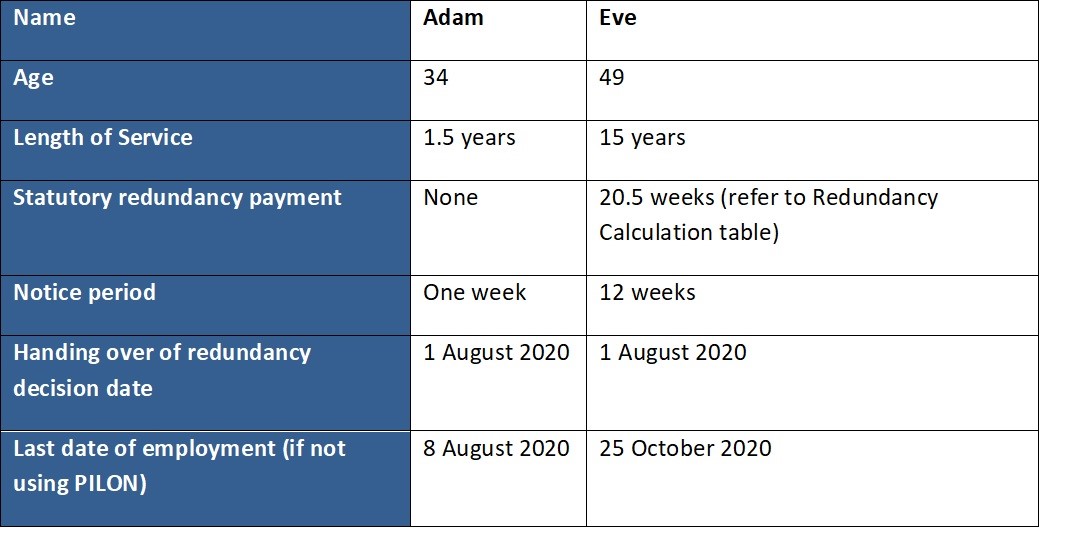If a Company Goes Bust Who Pays Redundancy? Lawful Insights for UK Personnel
If a Company Goes Bust Who Pays Redundancy? Lawful Insights for UK Personnel
Blog Article
Exploring the Interaction In Between Firm Redundancy and Organizational Versatility for Future Development
In the dynamic landscape of today's business globe, the complex partnership in between company redundancy and business flexibility emerges as an essential variable for sustained development and success. Companies commonly face the obstacle of striking a fragile balance between preserving a degree of redundancy to mitigate risks and fostering versatility to respond quickly to the ever-evolving market needs.
Relevance of Firm Redundancy
Firm redundancy is an essential aspect that improves organizational durability and reduces operational dangers. By integrating redundancy steps within the organizational framework, companies can better withstand unexpected interruptions and fluctuations in business atmosphere. Redundancy serves as a tactical buffer, allowing firms to adjust and react successfully to unforeseen challenges without compromising essential operations.
One trick facet of the value of business redundancy is its role in ensuring connection throughout times of dilemma. When encountered with abrupt modifications or emergencies, redundant systems, sources, or workers can action in to maintain critical features and avoid widespread disturbances. This connection not only safeguards the firm's reputation and consumer depend on but additionally lessens monetary losses and functional downtime.

Approaches for Organizational Adaptability

Producing adaptable business frameworks that permit for quick adjustments to market dynamics and consumer needs is necessary for remaining competitive in a rapidly advancing atmosphere. By proactively recognizing prospective disruptions and possibilities, companies can proactively thrive and adjust in an ever-changing company landscape.
Balancing Redundancy and Flexibility
Attaining a harmonious balance in between functional redundancy and organizational adaptability is extremely important in browsing the complexities of a dynamic business environment. Redundancy within a firm gives a security web, ensuring connection and stability in procedures. Nonetheless, an extra of redundancy can lead to inadequacies and impede adaptability to altering market conditions. On the other hand, business versatility permits firms to respond promptly to outside disruptions and take brand-new chances. Striking the appropriate balance in between redundancy and adaptability is a delicate procedure that needs a deep understanding of the organization's goals, sector dynamics, and danger resistance.
To accomplish this equilibrium, firms need to perform normal assessments of their operations to identify areas where redundancy is required for risk mitigation and where adaptability can drive development and growth. Executing flexible frameworks, promoting a society of hop over to these guys constant discovering and improvement, and motivating open communication across all levels of the company are vital approaches to integrate redundancy and flexibility successfully. By lining up these two crucial elements, firms can place themselves for sustainable growth and success in an ever-changing business landscape.
Study on Adaptation Success
In analyzing instances of effective business adaptation, it comes to be noticeable that the interplay between functional redundancy and versatility is a defining variable in shaping resilient organizations. One engaging study is that of Netflix. At first a DVD rental service, Netflix showed amazing adaptability by transitioning right into a streaming platform when digitalization interfered with the market. By strategically purchasing innovation and content production, Netflix not only endured but grew in a rapidly advancing market. Another standout instance is Amazon. Starting as an on the internet bookstore, Amazon constantly adapted its service model, broadening right into diverse fields such as cloud computing and expert system. This adaptability allowed Amazon to stay in advance of competitors and satisfy transforming consumer demands. Last but not least, Adobe offers a significant illustration of successful adjustment. The firm shifted from offering software program licenses to a subscription-based model, making sure reoccuring income streams and improved consumer engagement. These study emphasize the significance of operational redundancy combined with business flexibility in fostering long-lasting development and competition.
Building Durability for Future Growth
Building strength for future development calls for a critical placement of functional processes with market dynamics and emerging trends. Firms have to adjust to altering atmospheres by fostering a culture of adaptability, technology, and constant enhancement. Resilience involves not just getting better from problems but additionally proactively planning for future difficulties. One essential aspect of structure durability is purchasing durable danger management strategies to minimize prospective disruptions. This consists of situation planning, expanding supply chains, and establishing contingency strategies for various backups (who pays redundancy money).
Moreover, promoting solid connections with stakeholders, such as consumers, employees, suppliers, and the area, is important for keeping and weathering uncertainties trust fund and support throughout turbulent times. Efficient interaction and transparency play a crucial duty in building durability, as they aid align assumptions and promote cooperation in browsing uncertainties.
Furthermore, companies need to focus on understanding and advancement initiatives to upskill staff members and equip moved here them with the necessary devices to adjust to transforming conditions. By buying their labor force, companies can boost their flexibility and agility, eventually strengthening their durability for lasting future development.
Final Thought

In the vibrant landscape of today's company globe, the elaborate connection in between business redundancy and business adaptability emerges as a crucial element for continual growth and success. Business usually face the difficulty of striking a fragile balance between preserving a degree of redundancy to mitigate dangers and promoting flexibility to respond swiftly to the ever-evolving market demands.To attain this equilibrium, companies need to carry out normal analyses of their operations to determine areas where redundancy is needed for threat mitigation and where adaptability can drive advancement and development.In verdict, the interaction in between company redundancy and organizational adaptability is important for future development. Structure strength via a mix of redundancy and flexibility will certainly ensure that companies are prepared for the challenges of the future.
Report this page